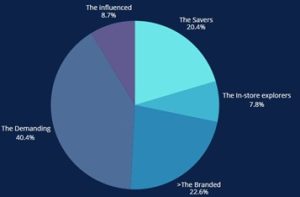
JANNIK SINNER’S SPONSORSHIP WITH HEAD: HOW THE IMAGE OF THE WORLD’S NO. 1 CAN IMPACT THE SPORTS MARKET
Author: Ilaria Croce, Alessia Parma e Carlo Alfredo Poloni
Date: 14-07-2025
Sports sponsorship is much more than a signature on a contract: it is a strategic lever that, when well crafted, can shape brand perception, influence purchasing decisions, and open up new communication pathways. This is the core of our market analysis, designed to explore the effects of the partnership between Jannik Sinner—rising star and new icon of world tennis—and Head, a leading brand in sportswear and equipment.
Our research adopted a comprehensive approach, beginning with desk analysis, followed by in-depth qualitative interviews, and culminating in structured quantitative analysis through surveys and advanced statistical methods.
A special thank you goes to professional tennis player Francesco Passaro, whose valuable contribution allowed us to delve into the dynamics of Head’s sponsorship strategy and to gain authentic insight into Sinner’s image, thanks to his first-hand experience and training sessions with the champion.
The goal?
To understand whether (and how) Sinner’s image can strengthen Head not only in tennis but also in other sports like skiing and padel, while identifying the key drivers influencing consumer choices.
Our Sample
The quantitative phase of the study involved 230 carefully selected respondents, all athletes aged 18 to 60 with at least basic knowledge of Jannik Sinner. The sample is balanced in terms of gender but shows variation in terms of geography and age:
- 86.5% live in Northern Italy
- 70.9% are aged between 18 and 25
From the sample:
- 68.3% are familiar with the Head brand,
- but only 43.9% are aware of the partnership with Sinner.
Interestingly, 54.3% report a neutral-to-positive openness to purchasing a Head product due to Sinner’s endorsement.
Bivariate analysis reveals that those most influenced by the sponsorship are aged between 36 and 60—a statistically significant correlation. This same group also attributes greater importance to Sinner’s role in boosting interest in tennis.
Another key finding from the quantitative phase concerns Sinner’s temporary suspension in February 2025. Through univariate analysis, we discovered that most respondents continue to see him as a positive and trustworthy figure, showcasing the resilience and solidity of his public image.
Supporting this, bivariate analysis between the perceived impact of the suspension on sales and on sponsored brands shows that those who see Sinner as an effective brand ambassador tend to maintain a positive opinion even during critical events—confirming strong consumer loyalty and trust in both the athlete and the Head brand.
Sponsorship: Limited but Strategic Impact for Targeted Clusters
One of the most surprising insights from the analysis concerns the actual weight of athlete sponsorship as a purchase driver: on a scale of 1 to 9, it scored an average of 4.03—making it the least influential factor.
Leading the list instead were:
- quality and durability,
- comfort,
- design and aesthetics,
- personal brand experience.
To dig deeper, we applied factor analysis, summarizing 17 attributes into six key macro-factors:
- Product Quality & Comfort: durability, innovation, materials
- Offer Completeness: customization, accessories, after-sales
- Brand Recognition: reputation, aesthetics, familiarity
- Social Influence: reviews, peer and expert recommendations
- Economic Advantage: accessible pricing, discounts
- Availability: in-store presence
This allowed for a cluster analysis, identifying five distinct consumer segments (internally homogeneous, externally heterogeneous):
- The Savers: Mainly aged 18–35, focused on price and comfort
- The In-Store Explorers: Prefer trying products in person and value tactile experience
- The Branded: Value design, quality, and personal experience with the brand
- The Demanding: Largely aged 36–60, seek comprehensive product offerings across all attributes
- The Influenced: Rely on advice from peers and professionals; seek value-for-money without sacrificing quality
The last two groups—the Demanding and the Influenced—are the most sensitive to endorsements like Sinner’s, highlighting the need for targeted communication strategies.

Future Strategies: From New Ads to Sports Events
To design the most effective Head ad campaign, we conducted a conjoint analysis focused on how Sinner’s image could be leveraged beyond tennis.
The variables considered included:
- Sport type: Padel vs. Skiing
- Sinner’s role: Main figure vs. Supporting role
- Ad style: Technical vs. Inspirational
- Communication channel: Social media vs. TV
The top-rated ad concept?
An active Sinner, using Head skis, in a technical-style commercial aired on social media.
This inspired a concrete proposal:
A campaign set in the Dolomites, where Sinner returns symbolically to his roots in a central and authentic role. The narrative would focus on performance, innovation, and technical detail—targeting the Demanding and Influenced segments, who are most responsive to celebrity endorsements.
To reach the other clusters, we suggest complementary initiatives:
- immersive events,
- on-snow product testing,
- in-store installations,
- collaborations with major events like the Milan-Cortina Olympics.
These would engage the In-Store Explorers and the Branded by offering a tangible, memorable brand experience.
Conclusions
The partnership between Head and Jannik Sinner proves to be effective and promising. However, its full potential could be unlocked through a segmented, authentic, and multichannel marketing strategy capable of engaging a broader, more diverse audience.
Sinner is not just a famous face—he is a credible ambassador embodying values such as determination, precision, and respect.
The challenge for Head lies in leveraging this asset to strengthen its position across other high performance sports and to reach new audiences.
This research confirms that knowing your audience is not enough: you must understand its composition, desires, and behaviors. Only then can a sponsorship become a real and lasting competitive advantage.


